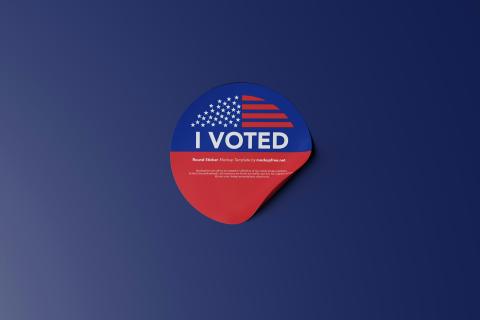South Dakota voters have a choice in the 2024 election:
They can keep an election system that is solely controlled by a single political party, or they can reform primary elections that allow voters to equally choose any candidate they prefer, regardless of party, under Amendment H.
Amendment H replaces the current closed taxpayer-funded partisan primary system in South Dakota, with a nonpartisan Top Two primary that allows all voters and candidates to participate on a single primary ballot.
Joe Kirby of South Dakota Open Primaries, the group spearheading the proposal, explains:
"Here is how it works: all candidates for an office are listed on a single ballot. All voters get that ballot. The top two vote getters move on to the general election. Most importantly, all voters get to vote."
He added that this would include "153,000 independent South Dakota voters who currently have little voice in selecting the people who lead our state." The top two vote-getters in each primary race then move on to the general election.
It cannot be disputed that South Dakota is a one-party state. Both US Senate seats are held by Republicans, as is the state's single congressional seat. The GOP also holds super-majorities in both state legislative chambers.
"Under our closed primary system, the Republican primary is the only election that often matters in the state," said Kirby.
"And unfortunately, a small group of activists has been disrupting the party. That could prove problematic for both the party and the state if we stick with closed primaries."
The case made by primary reform advocates is that, historically, primary elections draw in a low turnout. In safe districts and states, the voters who do turnout effectively decide election outcomes.
Research from the nonpartisan group Unite America found that partisan primary systems have resulted in just 8% of voters deciding 83% of elections.
This creates an incentive with elected officials to govern not based on what the electorate at-large wants, but what primary voters demand. It's a system that can and has easily been infiltrated by extremist movements.
A nonpartisan primary system, like the Top Two system in California or the Top Four system in Alaska, opens the process up to all voters and candidates, thus reducing the control a single group or movement has on election outcomes.
Voters in South Dakota can expect some elections to feature two Republicans in the general election. As seen in California, this gives independents and voters outside the majority party an influential voice in who wins.
Thus, there is less incentive to campaign to the extremes.
"Our challenge with our Top Two open primary proposal is to make people aware of exactly how it works. Once they understand that, they tend to say things like 'of course, why wouldn't we want that?" said Kirby.
Not much polling has been conducted on Amendment H. However, a June poll from South Dakota News Watch and the Chiesman Center for Democracy found that 54.6% of respondents supported the proposal.
"So far, I like our chances in November," said Kirby.
South Dakota Open Primaries submitted 47,000 signatures to put Amendment H on the ballot. Kirby explained that the biggest opposition to Amendment H is from party bosses on both sides of the aisle.
"Surprisingly, the Democratic leadership is as vocal in its opposition as are the Republicans, even though the party is no longer competitive in the state," he added.
Amendment H will be on the November 5 ballot in South Dakota. Absentee voting started on September 20. The measure is one of six state ballot measures in the US calling for an open nonpartisan primary system.
